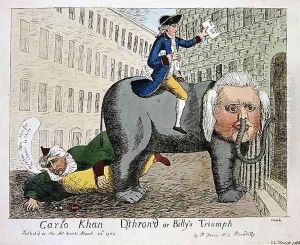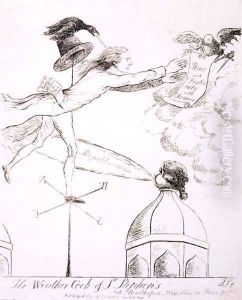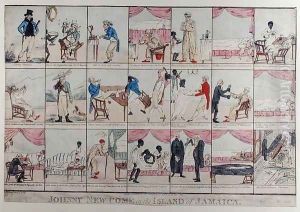James Sayers Paintings
James Sayers was an English caricaturist renowned for his satirical etchings and drawings, which captured the political and social landscape of his time. Born in 1748, Sayers initially pursued a career in law after completing his education but found his calling in the arts. Although not as widely known as some of his contemporaries like James Gillray or Thomas Rowlandson, Sayers played a significant role in the development of British caricature during the late 18th and early 19th centuries.
Sayers' work often focused on political figures and the aristocracy, critiquing their policies and behaviors through his sharp and witty visual commentary. His style was less grotesque than that of Gillray, favoring a more restrained and linear approach, yet his satire was just as pointed. He began publishing his caricatures in the 1770s, and by the 1780s, he was well-established in the field, enjoying the patronage of prominent figures of the Whig party.
Throughout his career, Sayers produced a significant body of work, contributing to the popularity of single-sheet satirical prints, which were sold individually or by subscription. His depictions of key personalities, including King George III, Queen Charlotte, and various politicians, resonated with the public and were influential in shaping public opinion.
Despite his success as a caricaturist, Sayers never completely abandoned his legal training, which perhaps informed the incisive and analytical nature of his art. He remained active in the art scene until the early 19th century, when he began to withdraw from public life. James Sayers passed away in 1823, leaving behind a legacy as a keen observer of the political and social currents of his time through the medium of caricature.


